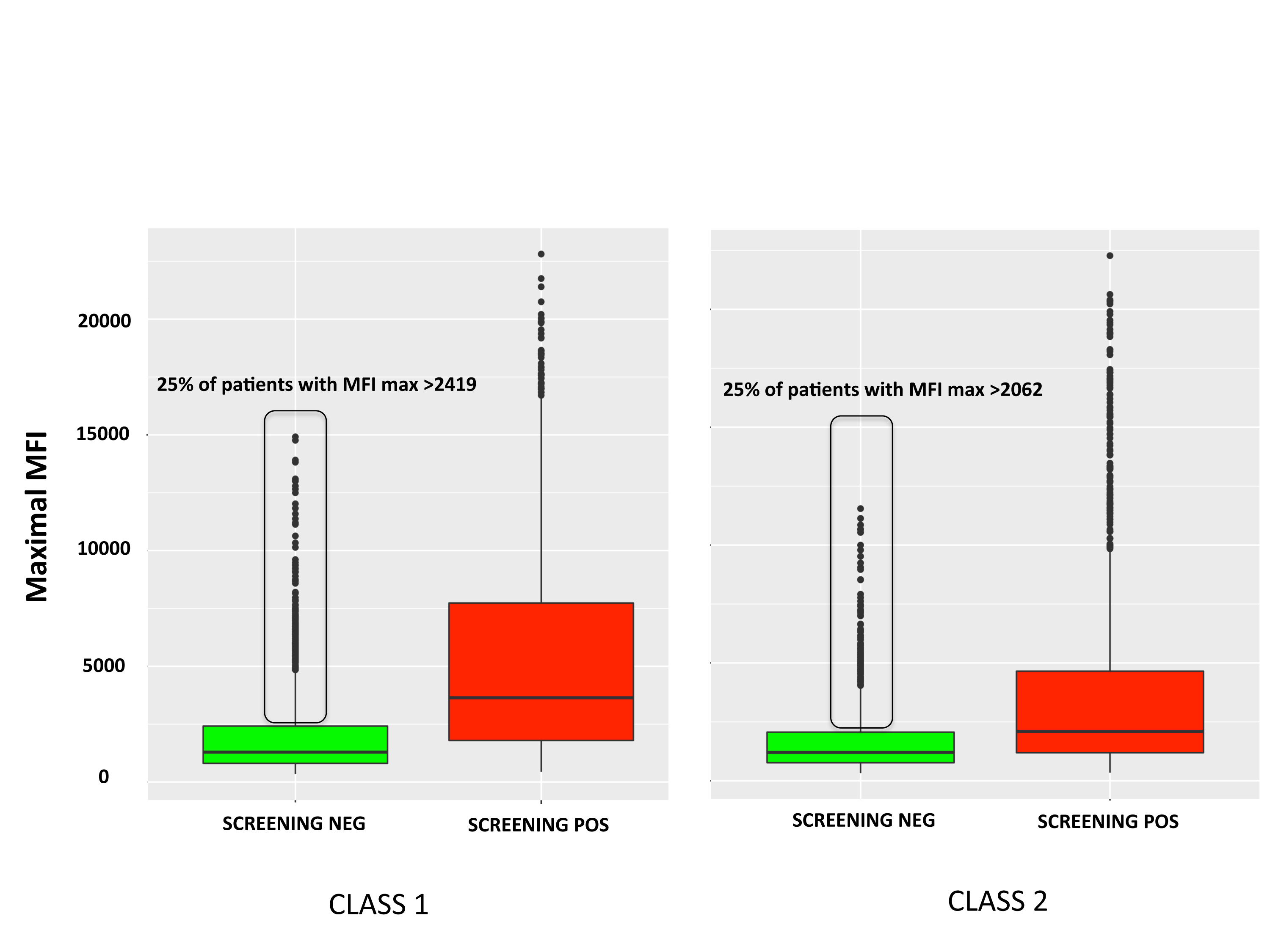Pretransplant Discordant Sera with a Negative Bead-Based Screening Test and a Positive Single Antigen Test may Reveal the Presence of Antibodies against Denatured HLA Antigens
Renaud Snanoudj1,3, Jérémy Siemowski2, Vassil-David Kheav2, Sophie Caillat-Zucman2, Jean-Luc Taupin2,3.
1Nephrology, Hôpital Foch, Suresnes, France; 2Histocompatibility, Hôpital Saint-Louis, Paris, France; 3UMRS 1160, INSERM, Paris, France
Introduction: Solid-phase bead-based assays have become the cornerstone for anti-HLA sensitization assessment in patients waiting for an organ transplant. Although single antigen (SA) tests are mostly performed only when a preceding Luminex screening test is positive, the correlation between the two techniques has not been explored. We recently observed that sera with negative screening test could come out strongly positive in SA assays.
Methods: We studied 3030 recipients of their first organ-transplant, with their last pre-transplantation serum tested with both screening and SA reagents from the manufacturer One Lambda. We reanalyzed all raw MFI data obtained with these two techniques. For screening, we considered the bead with the highest signal-to-noise ratio calculated according to the manufacturer’s recommendations. We have previously shown on this population that optimal ratio thresholds defining a positive screening, regarding results of SA, were 3.3 for class 1 and Results: Transplants were mainly kidney (66%), liver (13%), heart (11%) and lung (9%). Mean recipient age was 48.7±15.5 years. On this last pre-transplant serum, median [Inter-Quartile Range] of screening ratios was 2.7 [1.6-6.4] for class 1 and 1.5 [0.9-3.2] for class 2. On the same sample, median SA bead MFI was 1929 [1005-4217] for class 1 and 1480 [860-2731] for class 2. Based on the screening ratio obtained on this sample, 1748 patients (57.7%) were considered negative for class 1 and 1839 (60.7%) for class 2. Among these patients, 307 (17.6%) patients for class 1 and 224 (12.2%) for class 2 had at least a SA bead with MFI>3000 (Figure 1). This proportion rose to 63.5% (class1) and 59.4% (class 2) of patients when considering SA MFI >1000.
In order to assess whether antibodies in class 1 discordant sera were directed against denatured HLA antigens, we retained 46 patients with at least 3 consecutive sera displaying the same pattern, and retested the one with the strongest SA MFI after acid treatment of the SA beads. In these sera, 101 class 1 alleles were positive with a MFI >3000: 54 alleles had a similar or increased MFI on acid-treated beads suggesting that antibodies recognized denatured antigens, whereas in the other cases, antibodies targeted native antigens as deduced from a mean MFI drop of 91%. Antibodies against denatured antigens reacted with locus C in 79.6% of cases versus 27.7% for antibodies targeting native antigens (p=1.5e-7). Regarding the patients, 18(39.1%) had only antibodies against denatured antigens, 22(47.8%) only against native antigens and 6(13.1%) had both.
Conclusion: Despite a negative screening, a significant proportion of pre-transplant sera are highly positive in SA test. For class 1, more than half of tested sera display antibodies against denatured HLA antigens. Consequently, these results suggest that in numerous cases, the screening assay may miss strong antibodies targeting native HLA.
This study was realized with the financial support of Assistance Publique Hôpitaux de Paris, Sandoz and CSL Behring France.
